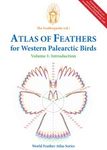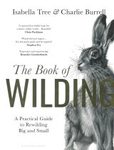Wildlife Guide Art / Photobook
Out of Print
By: Tim Harris(Author), Christopher M Perrins(Foreword By)
224 pages, colour photos, colour maps
Migration Hotspots brings the spectacle and excitement of amazing bird migrations to the general reader
![Migration Hotspots Migration Hotspots]()
Click to have a closer look
About this book
Biography
Related titles
About this book
Each spring and autumn hundreds of millions of birds – wildfowl, shorebirds, raptors, and passerines – migrate between higher and lower latitudes, or in some cases between high latitudes in the northern hemisphere and high latitudes in the southern hemisphere. In a handful of places around the world, a combination of geography, topography and climate combine to funnel migrant birds into narrow fronts, leading to migration hotspots, places where, for a few days each year, birds seem to be everywhere. The sight of thousands upon thousands of birds is one of nature's greatest wildlife spectacles.
Migration Hotspots takes a look at 30 of the locations where the planet's most dramatic bird migration can be witnessed, from raptor bottlenecks such as Veracruz (Mexico) and the Strait of Messina (Italy) to places like Point Pelée (Canada) and Beidaihe (China) where spectacular falls of songbirds can take place. And from wetlands where huge numbers of waders stop over each spring and autumn to the great rarity islands of Scilly and Heligoland.
Migration Hotspots: The World's Best Bird Migration Sites covers each of the world's major avian flyways and features stunning photography throughout. The geographical reasons for the importance of each hotspot are explained, with a summary of the different birds that pass through and the best times of year to see them, and an introductory chapter summarises birds' migration strategies.
Customer Reviews
Biography
Tim Harris has been fascinated by bird migration since as a young boy he witnessed swallows flying in off the sea at Selsey Bill, while terns streamed past and recently arrived warblers sang from scrub. He has since been birding in more than 40 countries and has been inspired over and over again by the sights and sounds of migration on all the world's major migration flyways. Tim was Deputy Editor of Birdwatch magazine between 1992 and 2000. He contributed to National Geographic's Complete Birds of the World, has written numerous articles and children's books about birds.
Wildlife Guide Art / Photobook
Out of Print
By: Tim Harris(Author), Christopher M Perrins(Foreword By)
224 pages, colour photos, colour maps
Migration Hotspots brings the spectacle and excitement of amazing bird migrations to the general reader
"[...] With its slightly oversized format, this book could, a first glance, easily be mistaken for an archetypal ‘coffee table ’ book – a format often dismissed by birders and those readers more usually drawn to field guides and species monographs. But this is a coffee-table book for birders, written by a birder fascinated by bird migration. [...] Twenty-nine sites are singled out as being ‘the world’s best’, a task that the author acknowledges was not easy. It is nice to see at least one location from each of the eight major migratory flyways, with representation of sites known for spectacular raptor, wildfowl, seabird, wader or passerine migration, as well as those known for their records of rare species. [...] If any aspect of a book could be judged by its cover, it would be that the photographs on the cover of this book brilliantly reflect the quality and depth of those found inside. The images are simply stunning, not to mention well reproduced: the finish and quality of the paper used in the printing clearly enhance this. I was also very pleased to see that the publisher has avoided the practice of spreading an image across two pages – usually all too common in books of this format. [...] Though Migration Hotspots is clearly no substitute for an in-depth site guide, despite the book ’s massive scope, Harris still manages to include in each site account enough information to satisfy. [...] As Tim Harris says, if just a few of those who leaf through the pages of this book are convinced that more needs to be done to save the world’s migratory birds, it will have served its purpose."
– Danaë Sheehan, Ibis, August 2014
"[...] Despite [...] faults, this is a well-produced book that does celebrate the wonders of bird migration. Hopefully, it will inspire people to visit these, and other, sites around the world and experience bird migration at its most thrilling. Sadly, those wishing to do so or those hoping to find out more about why and how birds migrate will have to look elsewhere for the information they desire. This is a book for the coffee table rather than the bookshelf."
– Richard Schofield, British Birds, 19-03-2014











































